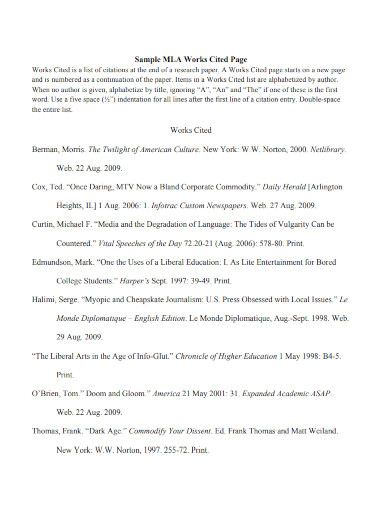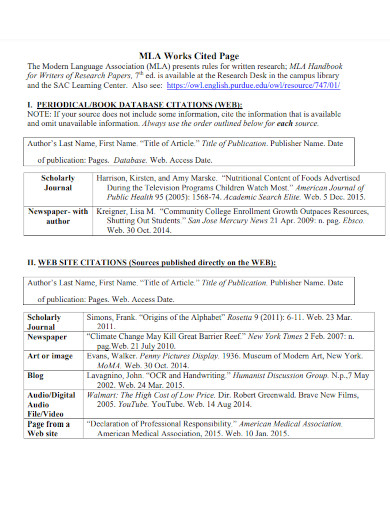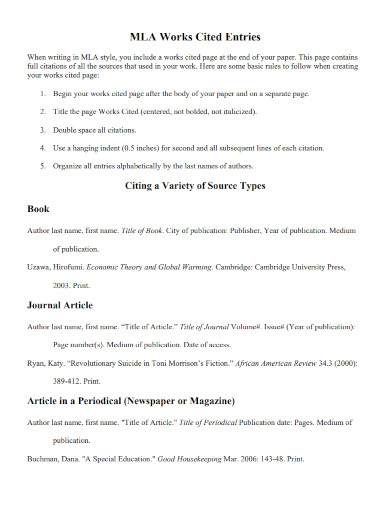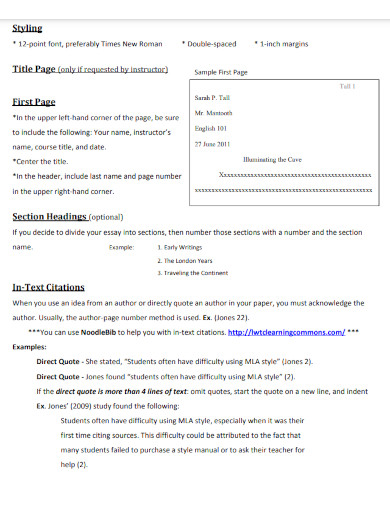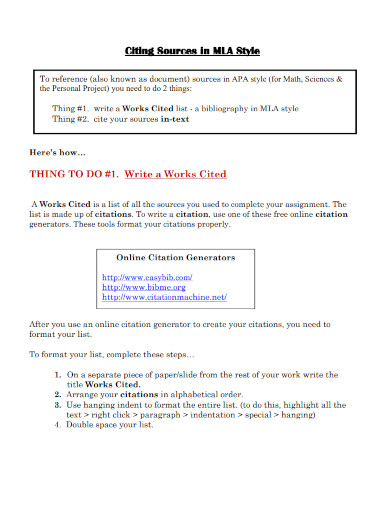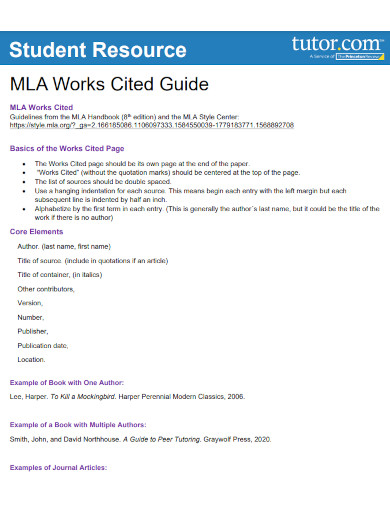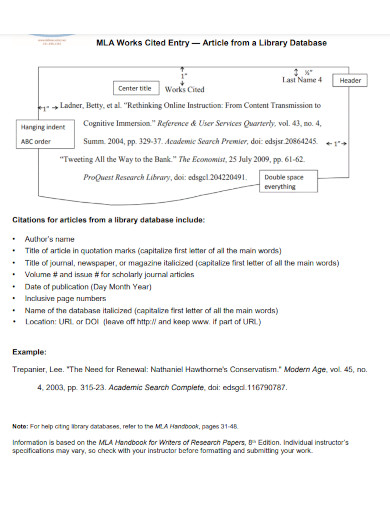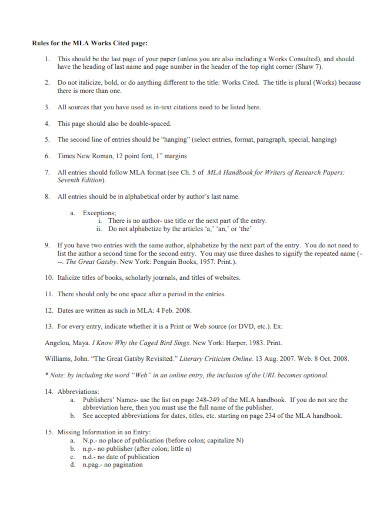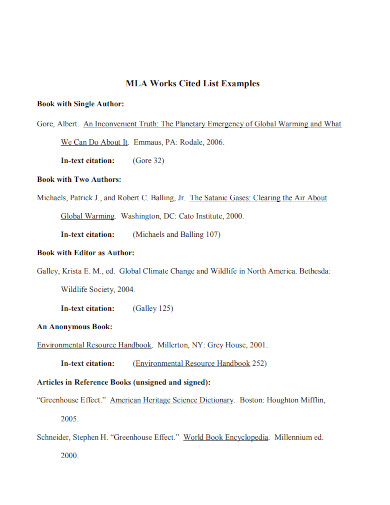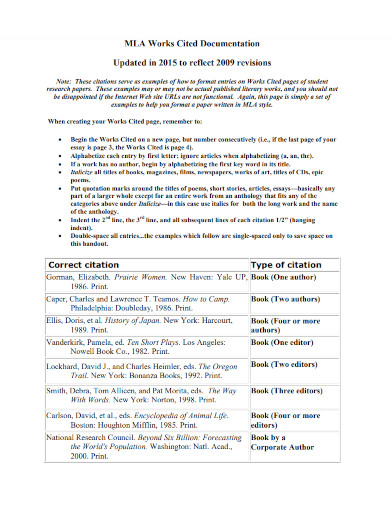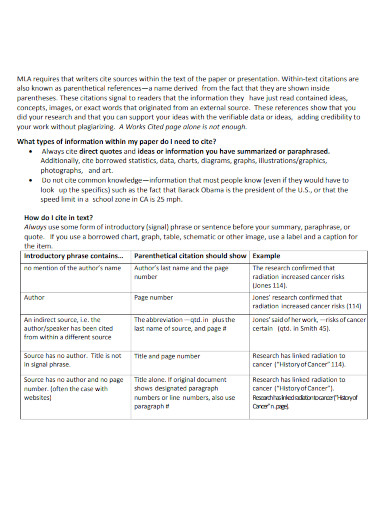10+ Work Cited MLA Examples to Download
As you wrap up your research paper or essay in MLA format, one of the final steps is creating the Works Cited page. This important page lists all the sources you used in your paper and gives credit to the authors whose ideas you’ve used. It’s a crucial component of academic writing, showing that you’ve done your research and can back up your arguments with reliable sources. So, let’s explore the ins and outs of creating a Works Cited page in MLA format!
1. Sample MLA Works Cited Page
2. MLA Works Cited Page Template
3. MLA Works Cited Entries
4. Work Cited MLA Format Quick Reference Sheet
5. Citing Sources in MLA Style
6. Student Resource MLA Works Cited Guide
7. MLA Works Cited Entry
8. Rules for MLA Works Cited Page
9. MLA Works Cited List Examples
10. MLA Works Cited Documentation
11. MLA Citation Information Set
What is Work Cited MLA Format?
The Works Cited page in MLA format is a list of all the sources you have used in your paper. It is typically located at the end of your document and provides readers with the information needed to locate each source you cited in your writing. The Works Cited page follows specific guidelines, such as organizing entries alphabetically, formatting citations consistently, and providing complete and accurate information about each source. By including a Works Cited page in your MLA-formatted paper, you show that you have thoroughly researched the topic of your research or journal paper and that your writing is supported by credible sources.
How to write Work Cited in MLA Format
Step 1: New page
Start a new page at the end of your document. Label it “Works Cited” without quotation marks, centered at the top of the page.
Step 2: Alphabetical order
List your sources in alphabetical order according to the author’s last name or the title of the work if there is no author.
Step 3: Necessary information
For each source, include the author’s name (if known), the title of the source, the title of the container (if applicable), other contributors (if any), version (if any), number (if any), publisher, publication date, location (such as page numbers or URLs), and the date you accessed the source if it’s online.
Step 4: Hanging indentation
Use hanging indentation for each citation. The first line of each citation should be flush with the left margin, and all subsequent lines should be indented by 0.5 inches.
Step 5: Font
Use italics for book titles, journal titles, and other longer works. Use quotation marks for titles of shorter works, such as articles or essays.
Step 6: Punctuation
Use the appropriate punctuation for each citation. For example, end a book citation with a period, a journal article citation with a period followed by the volume and issue numbers, and a website citation with a period and the date of access.
Step 7: Review your work
Double-check your formatting, text structure, manuscript, and information for accuracy and consistency.
FAQs
What sources should be included in the Works Cited page?
All sources that you have cited in your paper should be included in the Works Cited page, including books, articles, websites, videos, and any other sources you used to support your writing.
How should sources be listed on the Works Cited page?
Sources should be listed in alphabetical order according to the author’s last name or the title of the work if there is no author. Use hanging indentation for each citation, with the first line of each citation flushes with the left margin and all subsequent lines indented by 0.5 inches.
What information should be included in each citation?
Each citation should include the author’s name (if known), the title of the source, the title of the container (if applicable), other contributors (if any), version (if any), number (if any), publisher, publication date, location (such as page numbers or URLs), and the date you accessed the source if it’s online.
Remember, the Works Cited page is an important part of your MLA-formatted paper, as it shows the sources you used to support your writing and gives credit to the authors of those sources. In conclusion, be sure to follow these guidelines carefully to ensure that your Works Cited page is correctly formatted and that all necessary information is included.



